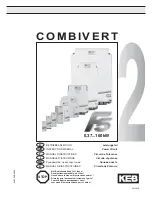
• The deionized water temperature is measured. The value is used for controlling the three-
way valve
• If one of the monitoring devices responds, a signal is output or the re-cooling unit and drive
are switched off.
Deionized water requirements
Table 3-1
Deionized water requirements
Value
Conductivity during filling
< 10 μS/cm
Evaporation residue
< 20 mg/l
pH value
5 to 9
• Content of metals in the hydrogen sulfide group (lead, antimony,
tin, bismuth, arsenic, copper, cadmium)
• Content of metals from the ammonium sulfide group (iron, co‐
balt, nickel, chrome, manganese)
• Content of sulfur chloride and nitrogen compounds
Not detectable
Content of oxidizable, organic substances
Max. a quantity equivalent to the
usage of 30 mg/l potassium per‐
manganate KMnO4
Ion exchanger
An ion exchanger is installed in the re-cooling unit. The ion exchanger is connected in the
deionized water circuit.
If the conductivity exceeds the permissible limits, then a message is output. In this case, replace
the filling in the ion exchanger with an original filling. If the conductivity continues to rise, the
re-cooling unit and drive are switched off. The ion exchanger is a consumable and is not covered
by the warranty.
Dirt filters
The re-cooling unit is equipped with several dirt filters
• A dirt filter with a sieve (mesh width: 0.5 mm) is located in front of the drive intake.
• A fine filter (mesh width: 0.05 mm) is located at the ion filter outlet.
• An air filter is fitted on the expansion tank.
that filter out dirt and contamination from the water circuit, thereby preventing the drive from
being damaged.
See also
Cleaning the cooling unit filter (Page 120)
Description
3.3 Power unit
3rd Party LCI Control Upgrade
Operating Instructions, 02/2022, A5E31872818
29
















































